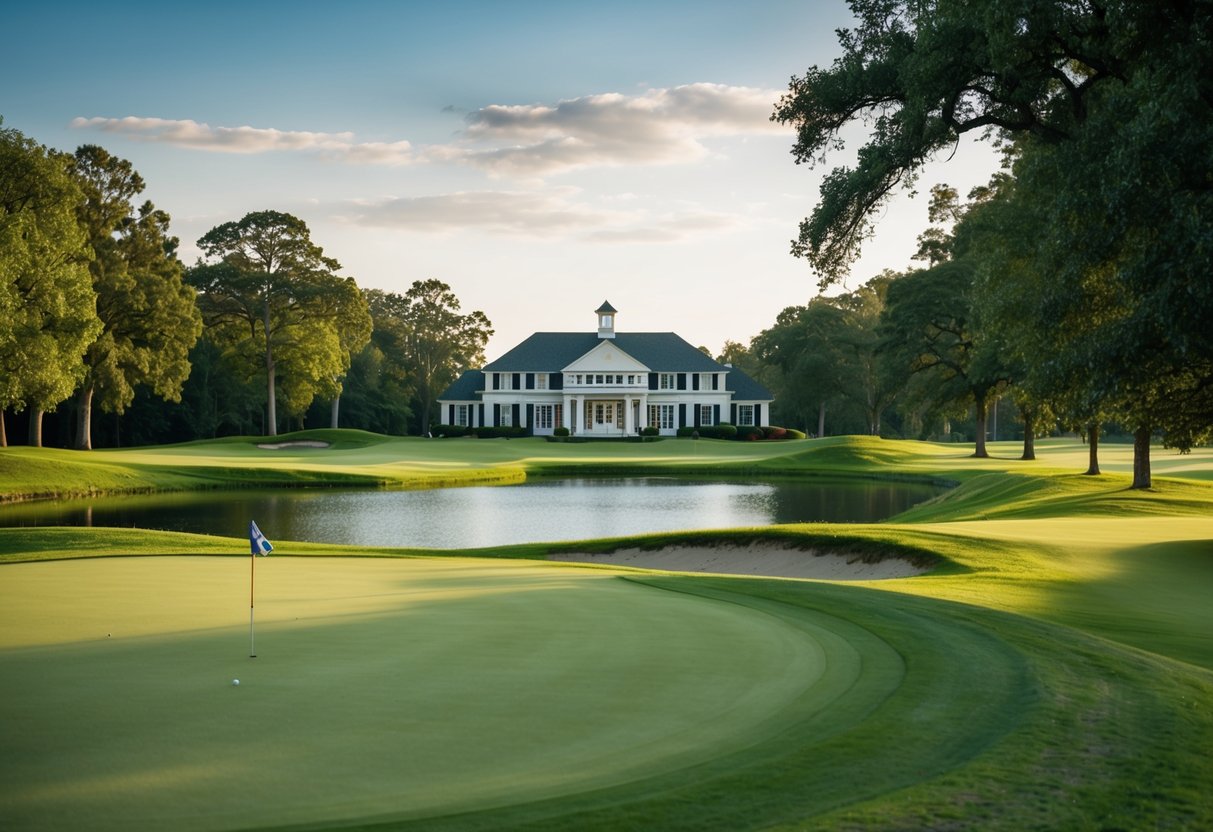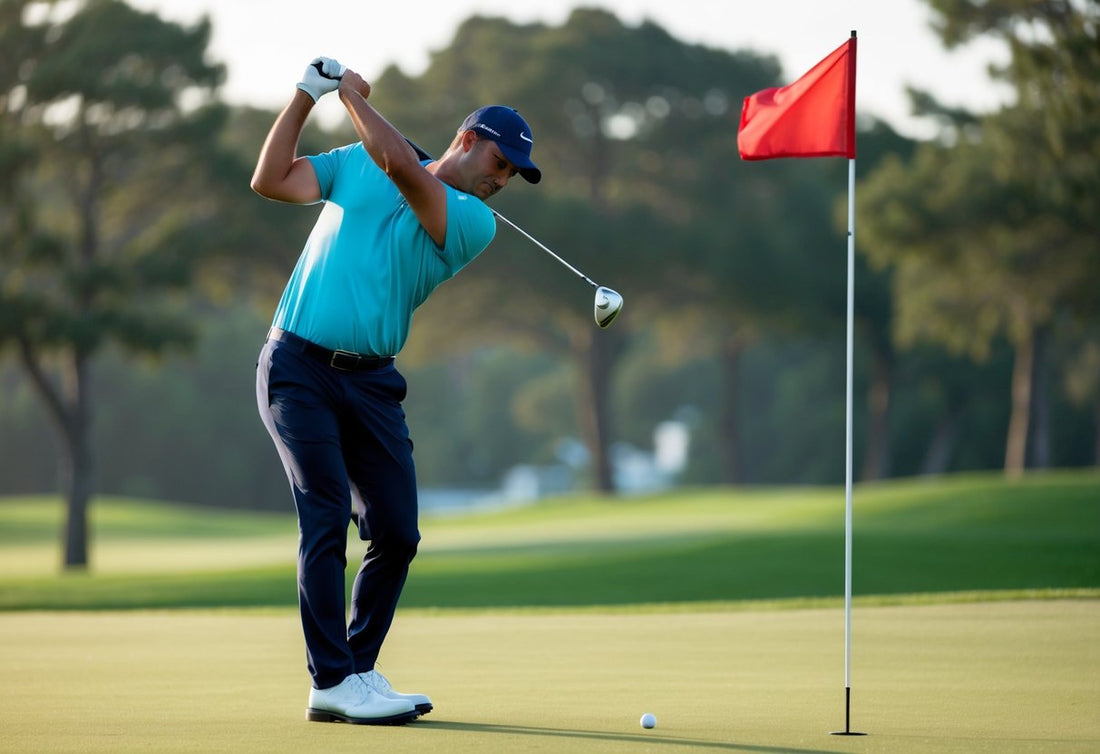Check out our golf rangefinders by Vovex to elevate your game!
Executive golf courses offer a unique and accessible golfing experience for players of all skill levels. These compact courses typically feature 9 to 12 holes, focusing on par-3 and short par-4 holes.
Executive courses are designed to provide a quicker round of golf while still challenging players' short game skills.
We love how executive courses make golf more approachable for beginners and time-strapped players. They're perfect for squeezing in a round during lunch breaks or after work. The shorter layout also means less walking, making it easier on the legs and allowing more energy for perfecting those tricky approach shots.
Many golf enthusiasts appreciate executive courses for honing their short game. With an emphasis on precision over distance, these courses let players focus on improving their iron play, chipping, and putting skills. It's a great way to sharpen your game without the pressure of a full-length course.
Key Takeaways
- Executive golf courses feature 9-12 holes, emphasizing par-3 and short par-4 holes
- These courses offer quicker rounds and are more accessible to players of all skill levels
- Executive courses are ideal for improving short game skills and fitting golf into busy schedules
Defining an Executive Golf Course
Executive golf courses offer a unique golfing experience tailored for efficiency and accessibility. These compact courses cater to busy professionals and casual players alike.
Key Characteristics
Executive courses typically feature 9 to 18 holes, with a mix of par-3 and par-4 holes. They're shorter than standard courses, often spanning 2,000 to 4,000 yards.
We find that most executive courses lack par-5 holes, focusing on precision shots rather than long drives. The greens and fairways are usually well-maintained but less expansive.
Tee times are often more flexible, and rounds can be completed in 2-3 hours. This quick play appeals to time-conscious golfers.
History and Evolution
The concept of executive courses emerged in the 1960s as a response to changing lifestyles and urban development. We've seen these courses gain popularity in areas where land is at a premium.
Initially, they were designed for business executives seeking a quick game during lunch breaks. Over time, their appeal broadened to include beginners, seniors, and families.
The 1990s and 2000s saw a surge in executive course construction. Many resorts and communities now incorporate these courses as amenities. They've evolved to offer high-quality experiences in compact spaces, often with innovative designs and challenging layouts.
The Appeal of Executive Golf Courses
Executive golf courses offer a unique blend of convenience and challenge. These compact layouts cater to golfers seeking a quick round without sacrificing the opportunity to improve their skills.
Quick Play
Executive courses are designed for speedy play. With fewer holes and shorter distances, we can complete a round in about half the time of a full-length course. This makes them perfect for squeezing in a game during lunch breaks or after work.
The shorter layout doesn't mean less excitement. Each hole presents its own challenges, requiring precision and strategy. We often find ourselves using a wider variety of clubs, as the compact design emphasizes accuracy over power.
Many executive courses feature par-3 and par-4 holes, creating a diverse playing experience. This mix keeps us engaged throughout the round, testing different aspects of our game in a condensed format.
Skill Development
These courses are excellent for honing our short game. The emphasis on approach shots and putting helps us improve crucial skills that translate to success on longer courses.
Executive layouts often include strategically placed hazards and undulating greens. These features challenge us to think critically about club selection and shot placement, enhancing our decision-making abilities on the course.
For beginners, executive courses provide a less intimidating environment to learn the game. The shorter distances allow new golfers to build confidence without feeling overwhelmed by lengthy par-5s or expansive fairways.
Experienced players also benefit from these courses. They offer a perfect setting for focused practice on specific aspects of our game, such as wedge play or putting under pressure.
Accessibility
Executive courses are typically more affordable than their full-length counterparts. Lower green fees make regular play more feasible for budget-conscious golfers.
The reduced time commitment also increases accessibility. We can enjoy a complete golfing experience in just a couple of hours, making it easier to fit into busy schedules.
Many executive courses are located in urban or suburban areas. This proximity to population centers means less travel time and more convenience for local golfers.
The relaxed atmosphere of these courses is welcoming to players of all skill levels. We often find a diverse mix of golfers, from beginners to seasoned players, enjoying the game side by side.
Design Elements
Executive golf courses feature unique design elements tailored for quick play and skill development. These compact layouts maximize space while providing an engaging golfing experience.
Course Layout
We find executive courses typically span 9 to 18 holes, covering less acreage than traditional courses. The layout often includes a mix of par-3 and par-4 holes, with occasional par-5s on larger properties. Holes are arranged to create a flowing sequence, minimizing walking distances between greens and tees.
Designers strategically place hazards and incorporate natural terrain features to challenge players. Water features, bunkers, and elevation changes add complexity to the shortened holes.
Tee boxes are usually more compact, and fairways tend to be narrower. This design encourages accuracy over distance, helping golfers refine their short game skills.
Hole Variations
Executive courses offer diverse hole configurations to keep play interesting. Par-3 holes dominate, ranging from 100 to 200 yards. These shorter holes emphasize precision iron play and putting skills.
Par-4 holes on executive courses typically measure 200 to 300 yards. They present opportunities for golfers to use a variety of clubs, from drivers to wedges.
Some executive layouts include a few longer par-4s or even par-5s, stretching up to 500 yards. These holes add variety and allow players to practice their long game occasionally.
Designers often incorporate doglegs, elevated greens, and strategically placed bunkers to increase difficulty without adding length.
Landscaping and Aesthetics
We see executive courses prioritize efficient use of space while maintaining aesthetic appeal. Landscaping plays a crucial role in creating an attractive and challenging environment.
Native plants and trees line fairways, defining hole boundaries and providing natural obstacles. Carefully placed flower beds and shrubs enhance the visual appeal around tee boxes and greens.
Water features serve dual purposes – they act as hazards and contribute to the course's beauty. Ponds, streams, and fountains add visual interest and create strategic challenges.
Bunkers are strategically positioned to guard greens and fairways. Their shapes and sizes vary to suit the compact layout while still testing players' sand game skills.
Typical Course Length and Par
Executive golf courses typically range from 9 to 18 holes, with most falling on the shorter end of that spectrum. We often see 9-hole layouts designed for quicker rounds.
The total yardage of an executive course is usually between 2,000 to 4,000 yards. This is considerably shorter than a standard 18-hole course, which averages 6,500 to 7,000 yards.
Par for executive courses is generally lower as well. A 9-hole executive layout might have a par of 27 to 30, while an 18-hole version could range from 54 to 65.
Here's a quick comparison:
| Course Type | Typical Holes | Total Yardage | Par Range |
|---|---|---|---|
| Executive | 9-18 | 2,000-4,000 | 27-65 |
| Standard | 18 | 6,500-7,000 | 70-72 |
Executive courses feature more par-3 holes than standard courses. We'll often find a mix of par-3 and par-4 holes, with few or no par-5s.
These shorter layouts allow for faster play, making them ideal for busy executives or golfers with limited time. They also provide a less challenging environment for beginners and casual players to enjoy the game.
Playing an Executive Golf Course
Executive courses offer a unique golfing experience that blends challenge and accessibility. We'll explore strategic approaches and equipment considerations to help you make the most of your round.
Strategic Approaches
On executive courses, accuracy trumps distance. We aim for precision with our tee shots, focusing on landing zones rather than crushing drives. Short par-3s require careful club selection and a deft touch.
Par-4s often tempt us to pull out the driver, but a well-placed iron might be the smarter play. We prioritize positioning over raw power, setting up easier approach shots.
Course management is key. We study the layout, noting hazards and optimal landing areas. Playing to our strengths helps us navigate these compact courses effectively.
Equipment Considerations
Executive courses allow us to streamline our bag. We often carry fewer clubs, typically 7-10 instead of the full 14. A driver isn't always necessary - a 3-wood or hybrid can suffice off the tee.
Wedges become crucial tools. We pack a variety to handle the diverse short game shots we'll face. A reliable putter is essential, as greens on executive courses can be just as challenging as their full-length counterparts.
Lighter bags or push carts make walking these courses a breeze. We might opt for half-sets specifically designed for executive play, balancing versatility with portability.
Comparing Executive Courses to Standard Courses
Executive golf courses differ from standard courses in several key ways. We've found that executive courses are generally shorter, with fewer holes and a focus on par-3 and par-4 holes.
Standard 18-hole courses typically measure 6,000-7,000 yards, while executive courses range from 2,000-4,000 yards. This reduced length makes executive courses quicker to play through.
Time is a major factor distinguishing the two types:
- Executive course: 2-3 hours
- Standard course: 4-5 hours
Executive courses often feature smaller greens and fairways. This design emphasizes accuracy over distance, perfect for sharpening short game skills.
We've noticed executive courses tend to have more relaxed dress codes and etiquette rules. This creates a less intimidating environment for new golfers or those pressed for time.
Pricing is another difference. Executive courses are usually more affordable, with lower green fees and equipment rental costs. This makes them accessible to a wider range of players.
While both course types offer challenges, standard courses provide a more comprehensive golfing experience. They include a full range of par-3, par-4, and par-5 holes, testing all aspects of a player's game.
Executive Course Etiquette
When playing an executive golf course, we follow specific etiquette guidelines to ensure an enjoyable experience for all. Pace of play is crucial on these compact layouts. We aim to complete our rounds in under 3 hours.
Dress codes are typically more relaxed than on full-length courses. However, we still dress neatly in collared shirts and appropriate bottoms. No denim or athletic wear, please.
We always repair our divots and ball marks. This helps maintain the course's pristine condition for fellow golfers. Raking bunkers after use is also essential.
Quiet and courteous behavior is expected. We keep our voices down and avoid loud outbursts, especially when others are teeing off or putting nearby.
Golf carts should be driven responsibly. We follow path-only rules when in effect and avoid wet areas to prevent damage to the turf.
Ready golf is encouraged to keep things moving. We prepare for our shots while others are playing, as long as it's safe to do so.
Lastly, we respect the shorter holes. Just because they're not as long doesn't mean we can take them lightly. We give each shot our full attention and enjoy the unique challenges executive courses offer.
Finding the Best Executive Courses
We've discovered some great ways to locate top-notch executive golf courses. Online resources like GolfNow and GolfAdvisor offer extensive listings and reviews from fellow players.
Local golf associations often maintain directories of executive courses in their area. We recommend reaching out to them for insider tips and recommendations.
Word of mouth is invaluable. Chatting with other golfers at the driving range or pro shop can lead to hidden gems we might have otherwise missed.
Many resorts and hotels feature executive courses on their grounds. When planning a trip, we look for accommodations that cater to golf enthusiasts.
Here's a quick checklist for evaluating executive courses:
- Course length (typically 4,000-5,500 yards)
- Par (usually between 54-65)
- Amenities (practice areas, clubhouse, etc.)
- Difficulty level
- Pricing and tee time availability
We always check course websites for virtual tours or hole-by-hole guides. These give us a great feel for the layout and challenges we'll face.
Trying out different courses helps us find our favorites. We keep a personal ranking of the executive courses we've played, noting standout features and memorable holes.
Frequently Asked Questions
Executive golf courses offer unique experiences for players. These courses have distinct characteristics that set them apart from other types of golf facilities.
What constitutes an executive golf course?
An executive golf course typically features shorter holes and a quicker play time compared to standard courses. We'll find mostly par-3 holes with a few par-4s mixed in. The total par is usually between 55-68 for 18 holes.
What distinguishes an executive course from a regulation course?
Executive courses are more compact than regulation courses. We see fewer long par-4 and par-5 holes. The overall yardage is shorter, often ranging from 2,000 to 4,000 yards for 18 holes.
Why are some golf courses labeled as 'executive'?
The term "executive" refers to the course's suitability for busy professionals. We design these courses for quicker rounds, allowing players to enjoy golf in less time. They're perfect for lunch breaks or after-work play.
How long are most executive golf courses?
Most executive golf courses range from 2,000 to 4,000 yards in length. We can usually complete a round in 2-3 hours, compared to 4-5 hours on a regulation course.
What can golfers expect when playing on an executive golf course?
On an executive course, we enjoy a faster-paced game. The focus is on short game skills, with more opportunities for approach shots and putting. Beginners find these courses less intimidating, while experienced players can hone their accuracy.
In comparison, what are the characteristics of a municipal golf course?
Municipal golf courses are publicly owned and operated. We often find them more affordable and accessible to the general public. They vary in length and difficulty, potentially including both executive-style and regulation layouts.






